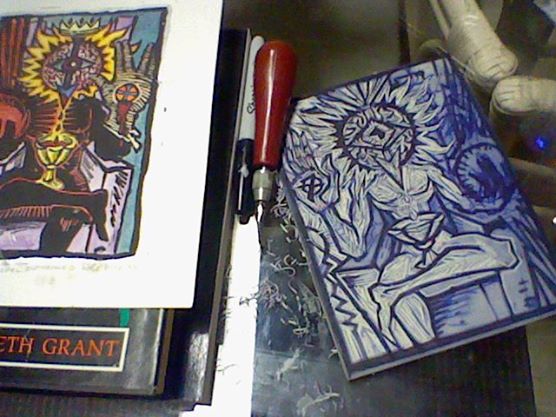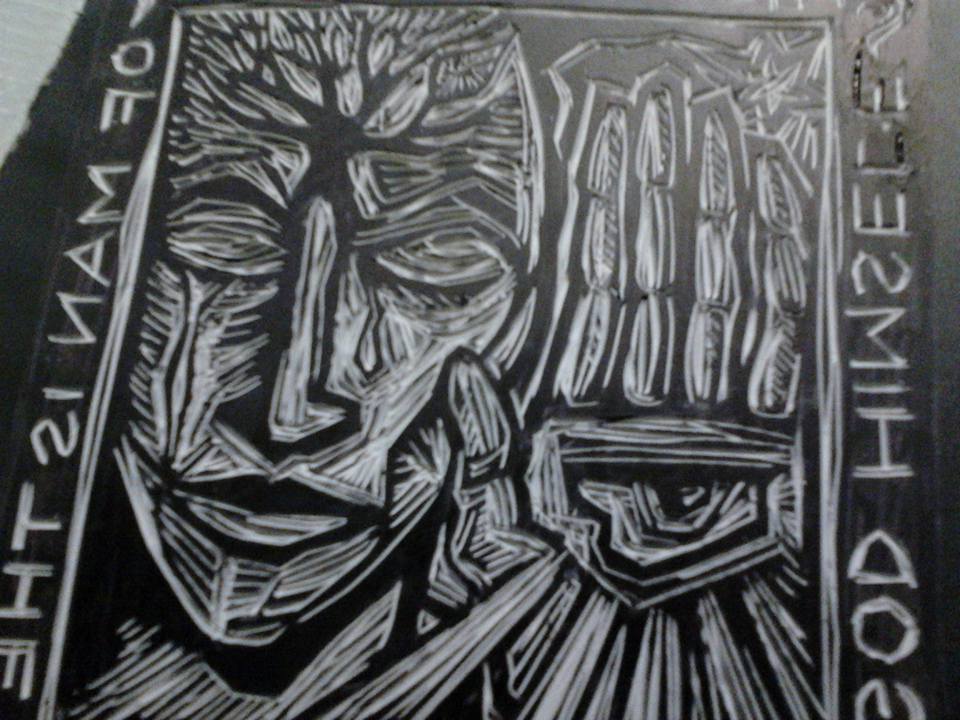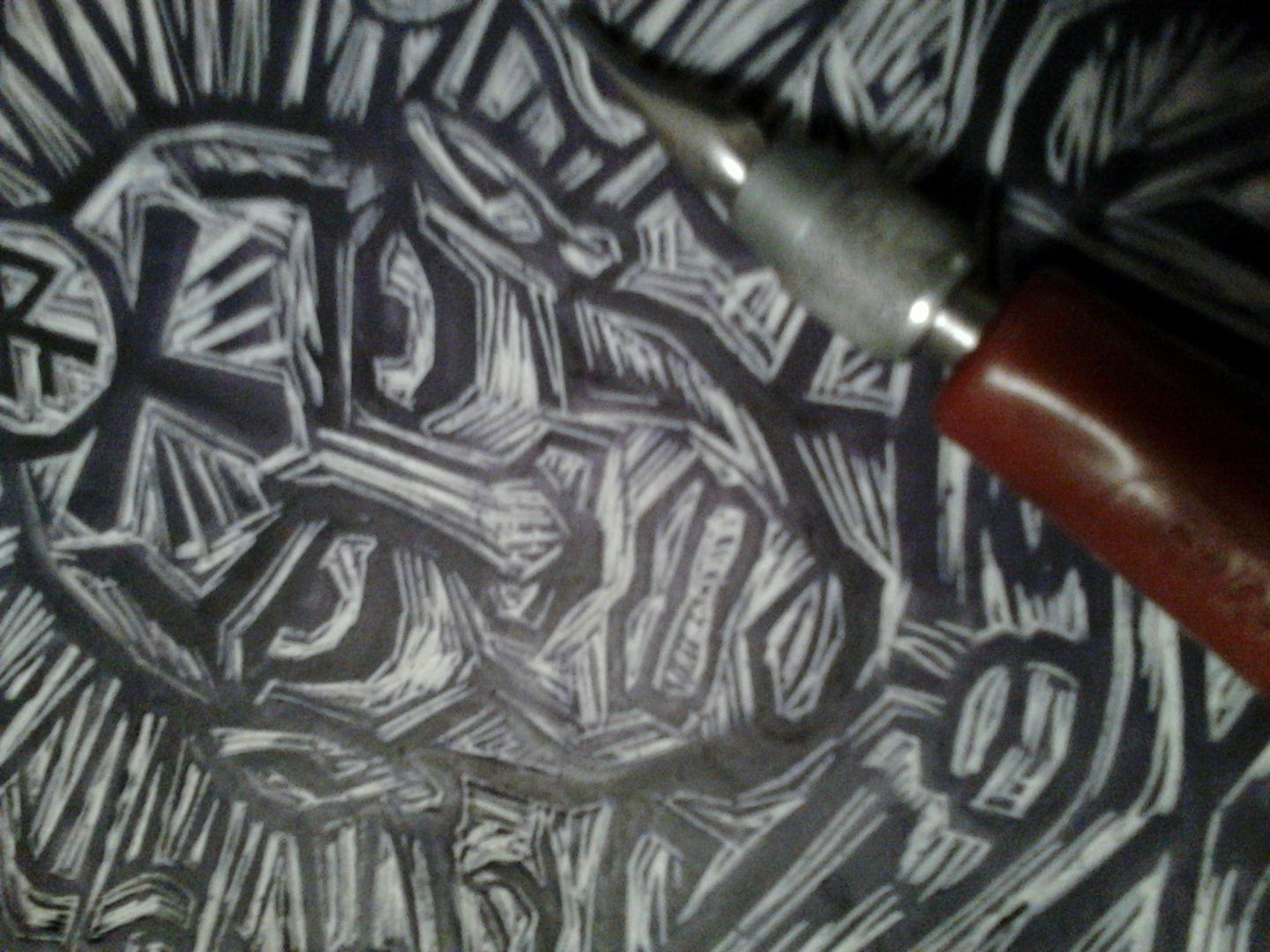ON THE ART OF PRINTMAKING
For me, printmaking has been my go to medium for almost 3 decades now. It would seem predestined from the moment I met William Blake as a teen and was drawn into his wood engravings for Virgil. Unlike Blake, I would ultimately settle on the block print as my favored means of making impressions, drawing up inspiration from the German Expressionists, most notably Max Beckmann and Ernst Kirchner. Later I would meet Wisconsin’s Marvin Hill who would prove to be one of my most significant teachers.
With drawing, I can access the immediacy of vision. With painting, I can explore the thematic content in terms of an “ectoplasmic development.” With printmaking, I can stand between these zones and manifest an artifact impregnated with residual (and, if I am successful, radioactive) energies.
I am especially irritated when the uninformed (or unobservant) refer to my prints as “drawings.” Block printing involves so much involvement from the creator through a series of stages. Drawing is only the beginning. Unlike many who transfer their initial image to the surface of a block and attempt to replicate the original image as accurately as possible, I often begin with a vision, notated with a simple compositional scrawl. This is put down on the print block free hand. From this I can make my decisions around detail “on the spot.” I am not performing a mechanical task but actively working out problems as the blade cuts into the surface of the block. Were it otherwise, I would become dreadfully bored.
I recall Giger stating that an artist should be in such command of his tools and medium that he or she can create under any circumstances, including altered states of consciousness. I am quite happy to report that I am confident in my printmaking abilities along these lines. In high school, we were all in danger of driving a v-groove blade through our fingers as we wrestled against woodblocks and slabs of linoleum. With enough practice, one “gets” the surface, like a surfer who understands the undulations beneath his feet and board.
Once the block is duly carved, the next phase is the one most fraught with peril. Brayer, ink and paper come together to reveal the impression. This cannot fail to yield up the idiosyncrasies of the impress. These aspects of the print make each and every one the unique work of art they are. But here’s the thing: only the artist can judge this stage of pass/fail. It can be raw as garage rock recorded live onto a 90 minute cassette in a crowded bar-or sharp edged and precise, well “mastered” to continue with the musical metaphor. However, if one is aiming at the latter and can only call up the former, there is no small distress in the studio. “Expressionism” is a verity-but never an excuse.
Having passed through this trial, the delivery of the child isn’t finished. Dry times can vary. Again, those who “like my drawings” have no idea what goes into those Supergraphic Black lines. Often, it’s about two weeks later when the ink is dry enough to apply watercolor. This is where the images, with some exception, come to life. I regard this as akin to the Buddhist Ritual of “Opening The Eyes.”
In the end, we have a print. As I work without a press and do all impressions by hand, my editions are extremely small, even when I’ve made an effort to produce a good amount.
What the patron receives is a work which has passed through it’s own series of Alchemical Phases. It is a work imbued with vision, the energies of execution and impress of the Soul.
-Kyle Fite



